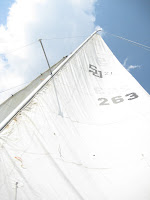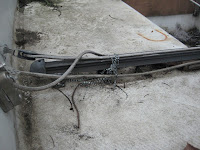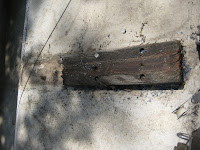
 So far the boat has handled well. the sails need some serious cleaning. They are a bit stretched out but will suffice for now. Note the knotmeter - 6 knots in a light breeze. The tilt up rudder is a bit stiff. i think I will have to loosen some bolts on the head plates to get it to swing a little easier.
So far the boat has handled well. the sails need some serious cleaning. They are a bit stretched out but will suffice for now. Note the knotmeter - 6 knots in a light breeze. The tilt up rudder is a bit stiff. i think I will have to loosen some bolts on the head plates to get it to swing a little easier.















































